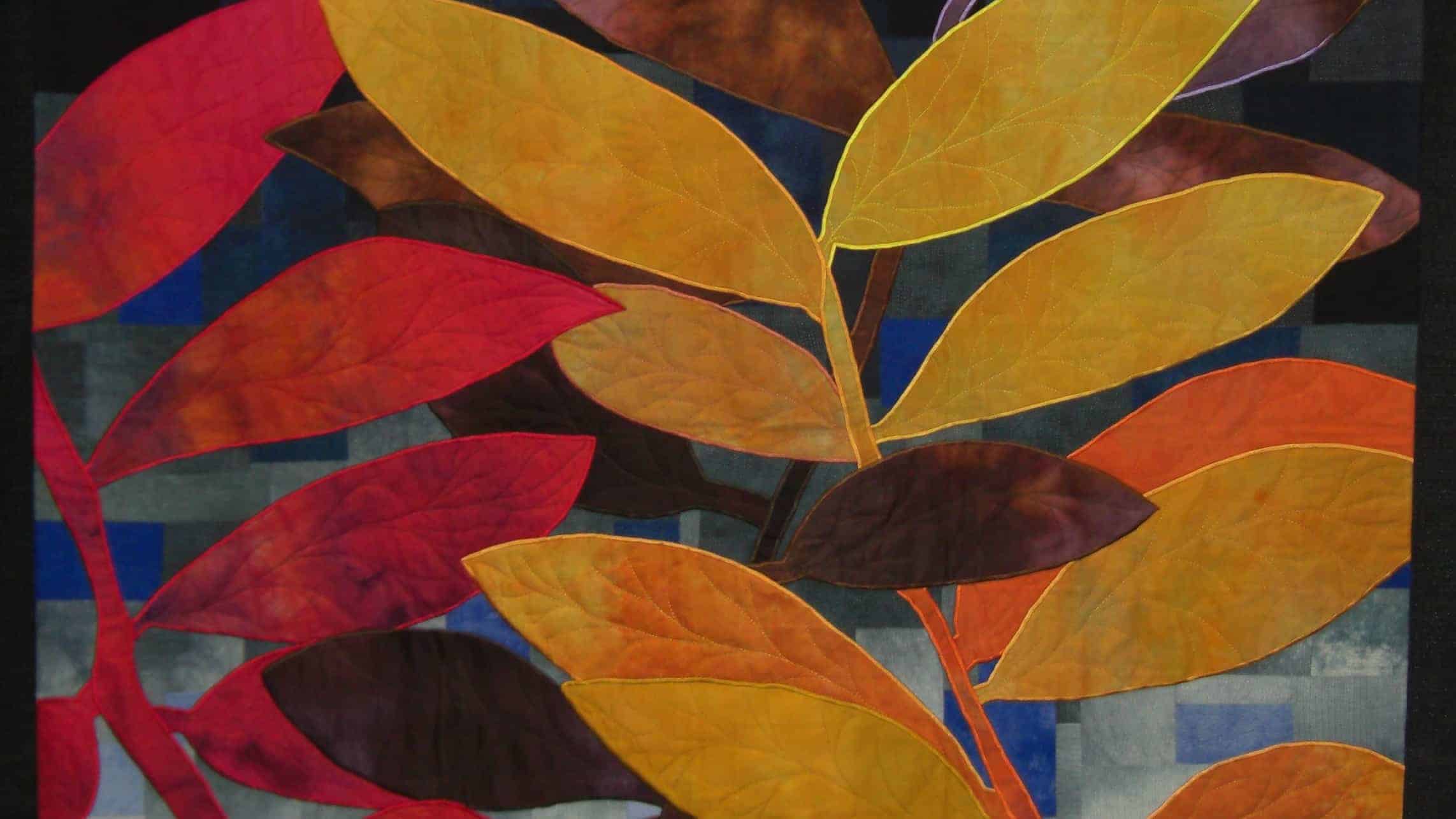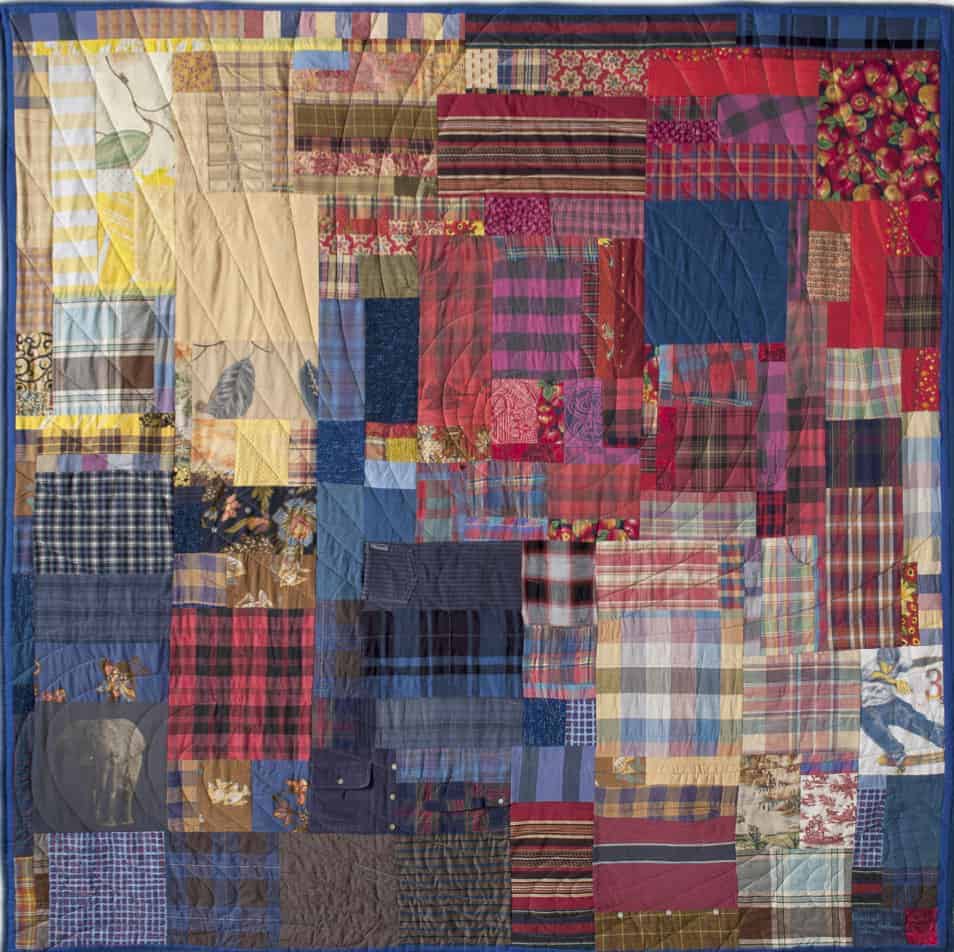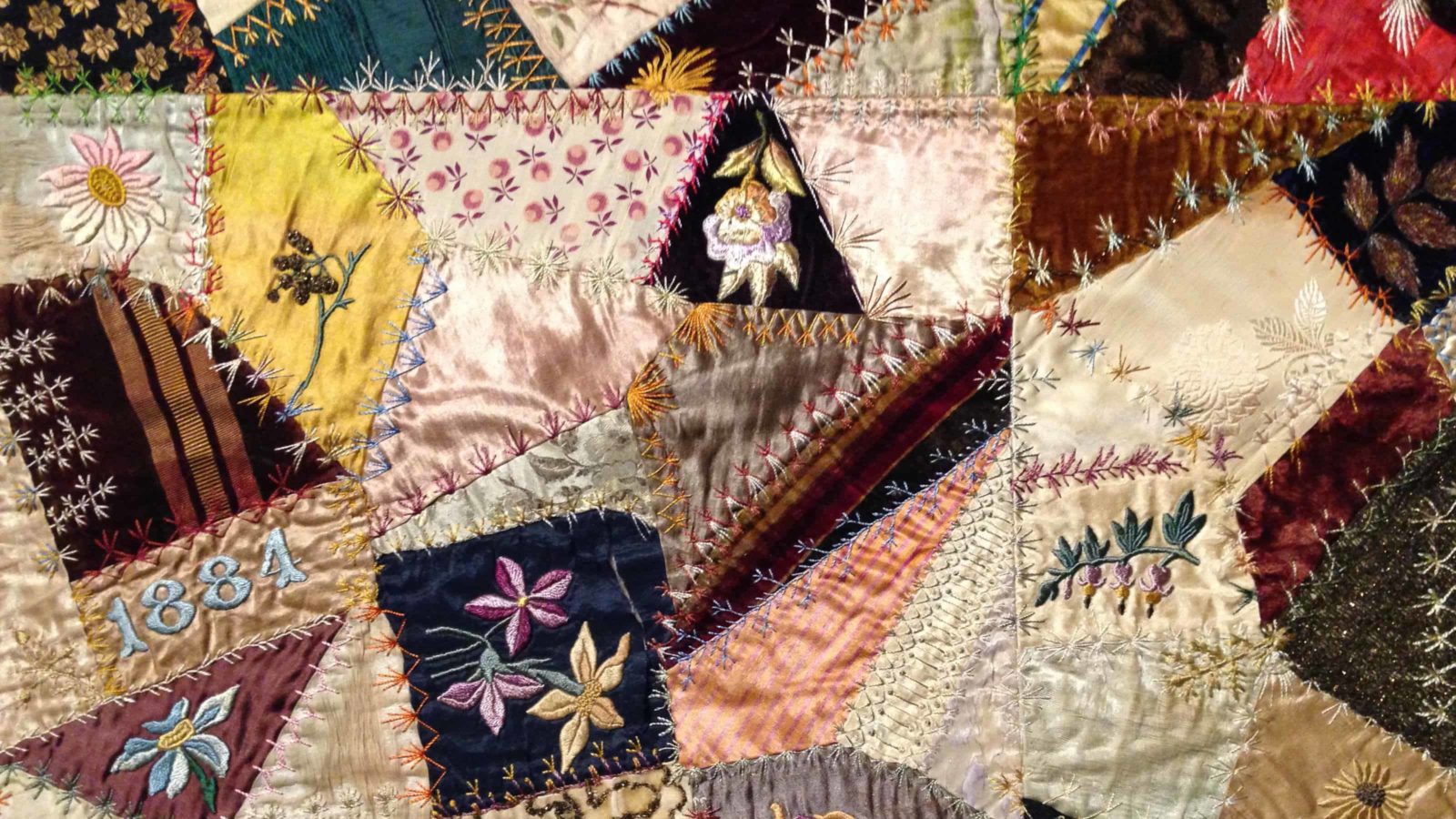Cloth hang along the shop’s walls in patterns of stars, diamonds, geometric patterns with color rippling through. Some show landscapes, sea-scapes, coffee-brown cows looking over the half-door of a barn. Some have contemporary notes, bright batik cloth or modern abstractions, a solid background with a scatter of bright color.
In a common room at Williams College, a group of students sort through fabric squares, scarlet and indigo, pine green and chocolate. In Great Barrington, fiber artist Karen Eckmeier from Kent, Conn., explains how to turn fire-colored cotton into a sweep of autumn leaves. An old New England artform is alive in the Berkshires.
“People enjoy creating something, often for other people, family, friends,” said Karen Jolin, owner of Karen’s Quilting Corner in Williamstown.

A quilt flames in autumn colors at the Mid Atlantic Quilt Festival. Creative Commons courtesy photo.
She has quilts her mother’s aunt made when her mother was born, and then when her mother married. Susan Frasier has a quilt from her many-greats grandmother, a log cabin pattern of spiraling rectangles with a velvety nap. And she has seen people come to quilting for the first time to make a baby quilt for a newborn in their family.
She and her husband, Dan Sullivan, have owned the Pumpkin Patch in Lee for more than 30 years. She and Jolin enjoy the friendliness and the practicality of the craft.
“I like quilts to be used,” Jolin said. “When I make a baby quilt, I want to see it on the floor.”
‘I like quilts to be used. When I make a baby quilt, I want to see it on the floor.’ — Karen Jolin
Frasier said she has always sewn, and she learned in school. As Sullivan pinned the top of a log cabin quilt to the edging, he explained that they had begun quilting nearly 30 years ago with a wholesale business, originally making quilts for Country Curtains and the Norman Rockwell Museum. When the United States began importing quilts, in the 1990s, they began to hold classes and sell fabric and make quilts for sale. Sullivan also repairs sewing machines.
Both shops carry quilts to sell, but the quilters speak with enthusiasm about helping people to make their own. Jolin has also sewn since she was small. She had lessons as a child, she said, and learned more in High School. And she had made small quilts along the way, but she began in earnest around 2002, soon after Tala’s Quilt Shop in North Adams opened in Heritage Park. The shop and community that Tala Neathawk built helped Jolin to get more active.
“I loved what she did,” Jolin said. “You’d go in there and feel better. She talked to people and got them engaged and motivated.”


Tala Neathawk closed her shop in 2012, Jolin said, and it left a void. A community had grown up around it, and people like her had begun quilting because of it. When she learned that Neathawk had no plans to reopen, Jolin began to make plans of her own. Karen’s Quilting Corner opened this summer on Route 7 in Williamstown, across from the ‘6 Pub.
Jolin works in the controller’s office at Williams College and minds her shop in the evenings. Marlene Bottesi, an avid quilter, works with her during the day. Local artists from Pittsfield, Stephentown and Pownal, Vt., sell patterns in her shop.
People have come in to talk and to learn, she said, and she has started classes. She and Bottesi hold open sewing sessions where people can sit and talk and get work done: patchwork, piecing fabric shapes together, appliqué — sewing a farbric shape on top of a fabric surface.
‘I loved what she did. You’d go in there and feel better. She talked to people and got them engaged and motivated.’ — Karen Jolin
The day before, someone had come in with a question, Bottesi said.
“I had to learn how to do it first,” she said.
There’s always something new to learn, Jolin said, a new technique, a new pattern, a new tool, a new fabric. Most people sew by machine, she said, but she knows a few local women who piece quilts by hand, putting together the top layer of bright fabric. They can send out to have this layer, the back layer of cloth and the cotton layer between them sewn together by machine.
Frasier and Sullivan agreed that machines have made quilting faster and easier, though some of their quilt-makers have made the thread part of the artform, turning thread into ripples on a pond or patterns of bark on a tree trunk.
Frasier showed images of contemporary quilts of contrasting colors and geometric patterns much like modern paintings, and vibrant quilts with a flavor of African color and design from Gee’s Bend, an isolated penninsula in southern Alabama.
“The more you talk, the more you learn,” Jolin said.
An art that began as a neccesary way to keep warm in the cold has grown many offshoots and new ways to play with the colors and textures of cloth. What quilting means, and what it can do, may become as flexible as the quilter’s imagination.
This story first ran in Berkshires Week in November 2013, in my time as editor of the weekly arts section at the Eagle. My thanks to Eagle editor Kevin Moran.

